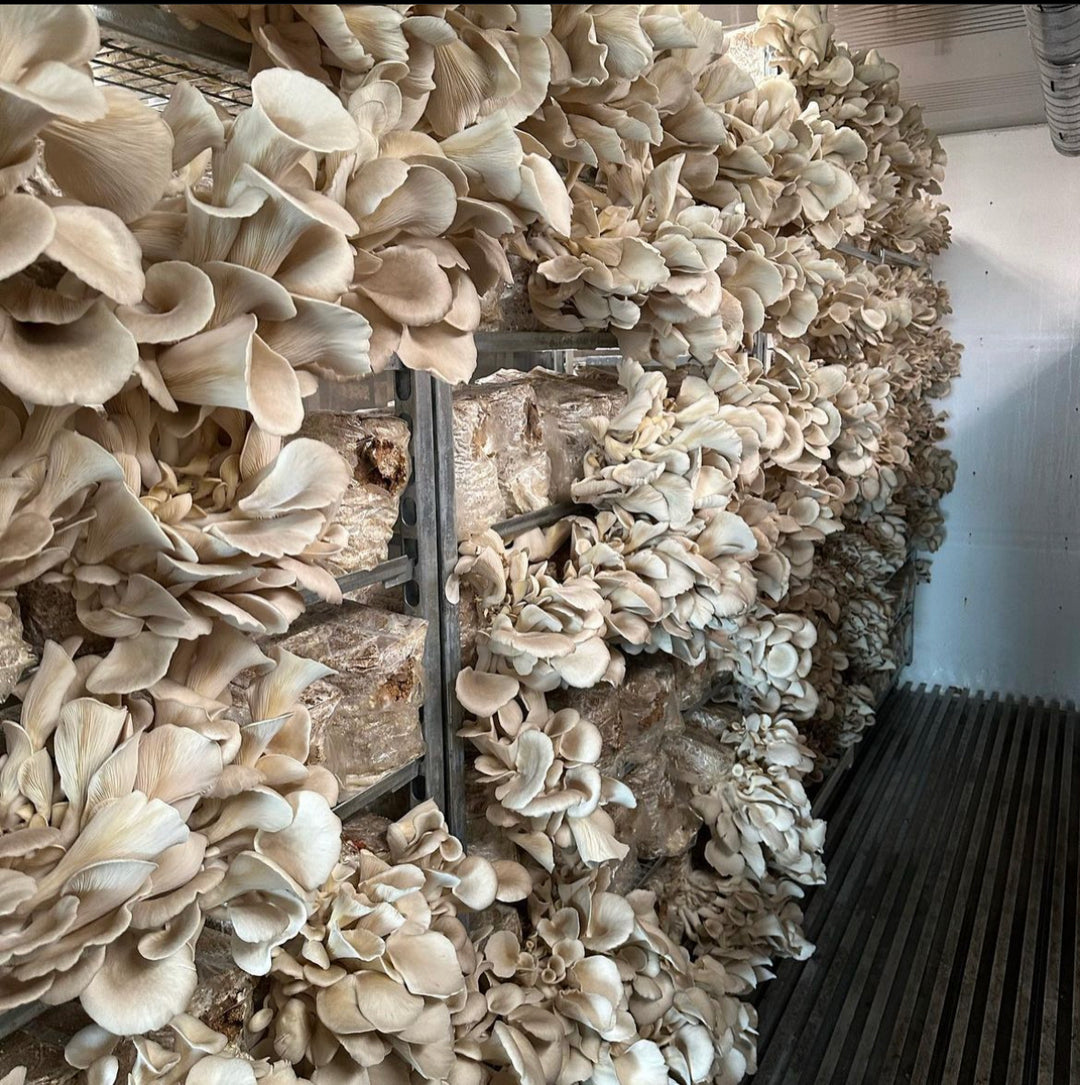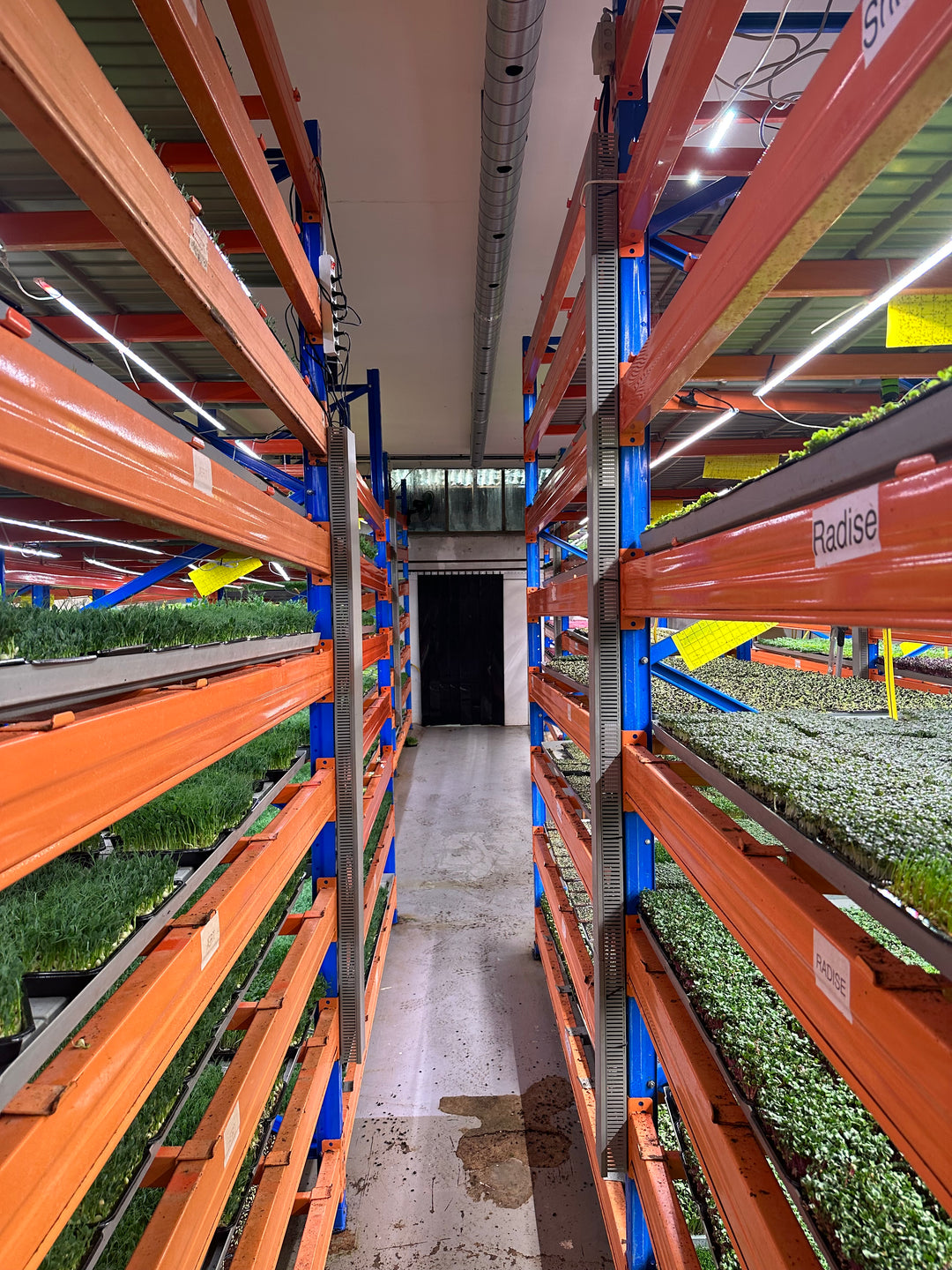Growing from our living room to an organization of 50 employees

In my family we always had a certain love for farming, my family line has been farming the land dating back to the 1500's. So farming is ingrained in our DNA. It is not often that technology comes and completely disrupts industries that have been operating for 100s and even 1000s of years. But the amount of innovation happening in the world over the last decade has been amazing. With the greenhouse industry beginning in the 1700s and now the vertical farming industry in recent years, so much has happened, and the farmers of tomorrow can come from everyone willing to invest the time needed to understand this disruptive trend.
Traditionally becoming a farmer has been a very expensive and a risky business since the price of equipment can quickly run into the millions in traditional farming. The weather has always been very unpredictable, and in recent years it has only gotten worse. Who knows how the weather will be in 30 years from now? When your success as a farmer is dependent on outside forces you are not able to control, then you need to be very strong financially unless you want to risk going broke. If you lose your crops for one or two seasons and your livelihood is dependent on the harvest to be successful then your foundation is very risky since you can go out of business without it being your fault.
It is a bit crazy to think that we began our indoor farming journey with just a couple of thousands of € and now got to the point of having an organization of 50 employees while supporting indoor farmers in 10 countries. Thinking back to the early days of our journey we would never in our wildest imagination believe that we could have gotten where we are today, and even at the rate of growth we experienced.
It all began when we understood it was possible to build our business with just a single Growrack system and getting feedback from customers in our local community. The way to achieve success as a bootstrap entrepreneur(working with no money and reinvesting the profits), is to create a small prototype, show it works and then get a small amount of funding if you haven't got the money to begin. We invested 2000€ into the first setup we had and then proved the potential of that system. After we had done this we had attracted some attention and from this attention we could find someone who would invest 6000€ into starting the business with us. In Denmark at the time it took an initial capital of 6000€ to set up a LLC (limited liability company).
Combining the experience from the hydroponics industry and the hospitality industry we figured how to grow, sell and scale our business to what it is today. We went to a thrift store to get a cheap metal shelf for storage and ordered some LED lights without any knowledge of whether they would work. Out of 5 different LED lights we found 1 that worked and started growing our first trays. Later we figured the LED´s were very bad quality but it got us started!
We began selling our microgreens on farmers markets and to our neighbors and friends, they loved it and we began investing more time into the business after getting the initial feedback from our friends and family.
We quickly ordered more growracks and grew from our living room into a 4m2 room, then 12 m2 and in this room we operated for some months before betting big and renting a 150 m2 commercial space. We spent all our time working during this period. It was about this time when we also scaled our hydroponic store into a 1000m2 commercial space, but we believed more in vertical farming than on reselling hydroponics equipment so we sold off our shares in the hydroponic business and went all in on growing microgreens instead. The reason we made the shift was because we saw the long term picture of how the fundamentals of both businesses were structured. When we were considering the longterm picture of reselling hydroponic equipment and LED growlights we would only be able to sell a growlight every 3-5 years so it would take a long time before we would get the customer back buying more once the light was purchased. But with our microgreens when we figured how to get customers to buy repeatedly we would be able to sell smaller orders but with a much higher rate of consistency. Because of this the long term viability of our microgreens business made more sense and therefore we pivoted into indoor vertical farming.
To create a business that is able to grow continuously you need to find ways to create customers who keep coming back to your business. If you are in the selling business you need to keep finding more customers if you want to sustain your growth, but if you are in the business of creating value for recurring customers you will have a much easier time growing consistently because every new customer you get will grow your business long term. What matters is the lifetime value of your customers, if it is high enough you will be able to spend your resources on branding and marketing. The business with the highest lifetime value per customer will be able to outspend all the competitors in the long run and that will result in your business becoming the leader in your industry. You can increase your lifetime value per customer simply by keeping them for longer or selling more per customer.
3 months after we sold our shares in the hydroponic shop, the pandemic happened… Thinking back it was probably the most difficult time of our business career since our sales dropped 95% within a week. This was the point of breaking for us and we almost gave up.
At some point in all businesses there comes a time where we need to sit down and reevaluate if this is worth it or not. At this point, everything seems to make no sense, we start questioning ourselves and this is where most people choose to quit. If we would have been going over in a corner crying about what happened, that would not have helped us in any way. So we choose to fight. We evaluated our business and thought of every single possible way to figure out a solution. We came up with the idea about helping some of our clients with landscaping work, we focused more into the retail side and started looking for consumers directly. By doing all these actions we were able to sustain our revenue and 9 months later we had enough money to be able to reinvest it into an even bigger facility! So instead of quitting we invested more time and effort.
The worst and hardest time in growing a microgreens business is when you are building the next stage. Here you have to keep operating your current business, keep your customers satisfied while you also have to take care of the construction of your new farm. We have experienced this with ourselves every time we moved into a bigger place but also our clients we consult are having a very hard time during this period. You have to pay double rent, make sure that the construction is going as planned and close down your current facility before moving all the equipment and managing to stay consistent in delivering to your clients so they stay happy.
We spent 6 months managing our farm in our 150 m2 facility while constructing our 300m2 growroom on our next property with an indoor capacity of 850m2. Building our current farm was the most stressful period we have ever overcome and much more stressful than when the pandemic hit. If you go to our youtube channel: Vertical greens. You can scroll to the bottom videos and watch the journey that started 9 months after we had moved into our plant factory.
We spent everything we owned on building our current farm and literally went all in. All in with our time. All in with our effort because we worked all our waking hours on becoming profitable. We never got any investments, no endorsements or any grants to build the farm. We put ourselves into the situation of either losing it all or winning big time. Without this motivation we would not have won. We literally burned the boats. I remember living on the couch at the company for 9 full months just so I could pay myself less, so we could reinvest even harder into the business, and I would be able to 100% focus on the operations. Little by little we built the procedures, trained one employee at the time and filled up our indoor farm at max capacity fulfilling the potential of our production capacity.
Today we are employing 50 people in our own farms, while helping other companies become successful all over the world, we have achieved what most microgreens farmers never get to achieve and we are very proud of what we have accomplished.
During this email series you will learn lessons and secrets from building a long lasting microgreens business and hopefully become inspired from our journey. Our goal with this email series is to guide you through your own journey and help you realize what makes your business more successful while decreasing your odds of failing.
If you are experiencing a hard time operating your own microgreens business or you believe that we are able to help you achieve the results you are looking for, then we also offer different programs to get you set up with the right foundation from the beginning.


